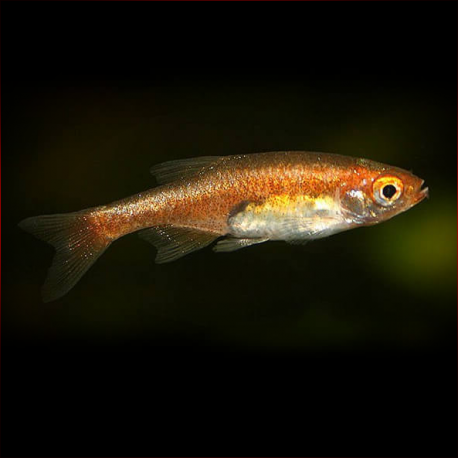More info
Datasheet
| Minimum Tank Size | 60 litres / 15.85 US gallons |
| Maximum Size | 3.0cm / 1.18inches |
| Temperature | 20°C / 68.00°F - 24°C / 75.20°F |
| Hardness | 3.03dgH / 54ppm - 15.02dgH / 268ppm |
| pH | 6.0-8.0 |
Behaviour:
The Red Dwarf Rasbora is a species that can be easily intimidated or outcompeted for food by larger or more boisterous tankmates; however, the presence of similarly-sized surface-dwelling species in the aquarium setup can help reduce its shyness. It is important to note that the closely-related Microrasbora cf. rubescens is not recommended for cohabitation as hybridization may occur. This species tends to shoal by nature, so it is recommended to keep a group of at least 8-10 specimens to reduce nervousness and promote natural behavior. In larger groups, males tend to display their best colors and exhibit interesting behavior as they compete for female attention.
Feeding and Diet:
The Red Dwarf Rasbora typically feeds on small invertebrates and zooplankton in its natural habitat. Newly-imported specimens can be in poor condition and may be difficult to acclimatize to aquarium life, so providing small live foods initially is recommended. As the fish become settled, dry and frozen products can be introduced into their diet.
Reproduction & Dimorphism:
Like many small Cyprinids, the Red Dwarf Rasbora scatters its eggs randomly, usually among aquatic vegetation, and does not exhibit parental care. Mature females are typically deeper-bodied and larger than the compact, intensely-colored males. Spawning occurs frequently in good conditions, and fry may start appearing in a mature planted aquarium without intervention. To increase breeding success, a more controlled approach involving separate smaller containers with appropriate conditions for spawning can be implemented.
Habitat and Distribution:
Endemic to the isolated mountain lake of Inle and its surrounding watershed in Shan State, eastern Myanmar, the Red Dwarf Rasbora is facing endangerment. The species has been significantly impacted by unsustainable agricultural practices, introduction of non-native predatory species, and collection for the aquarium trade. Lake Inle, where the species resides, is characterized by clear, shallow waters with a fertile substrate that supports various endemic species of fish and gastropods.
Aquarium Setup:
For optimal care of the Red Dwarf Rasbora, it is best kept in a densely-planted tank, making it an excellent choice for a carefully-aquascaped setup. Providing relatively gentle filtration, along with adding floating plants and driftwood roots or branches to diffuse light entering the tank, is appreciated by this species. Detailed water parameters including a pH range of 6.0-8.0, hardness of 54-268ppm, and a temperature of 20-24°C should be maintained in a minimum tank size of 60 liters.
[Please see the table for complete information on water conditions.]

